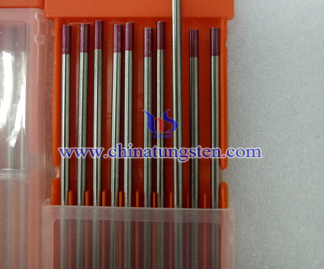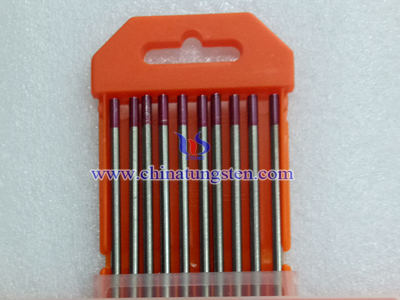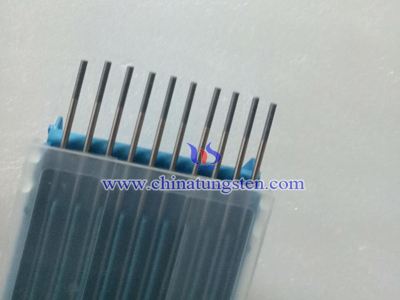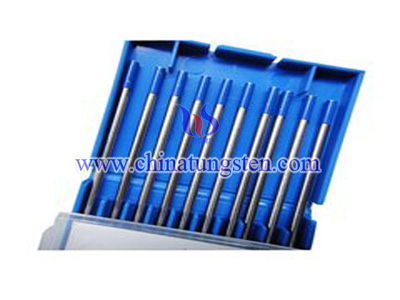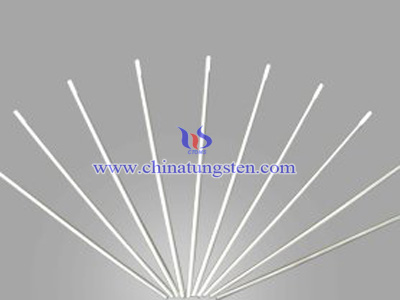Thoriated Tungsten Electrodes
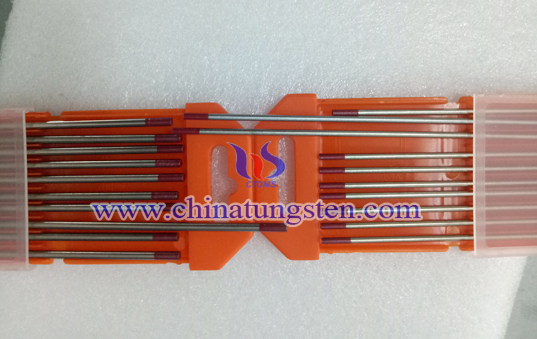
Thoriated tungsten electrodes are electrodes made of tungsten and thoria by different proportion and the most widely used ones are 2% thoriated tungsten electrodes. Thorium increases the electron emission qualities of the electrode, which improves arc starts and allows for a higher current carrying capacity. This electrode operates far below its melting temperature, which results in a considerably lower rate of consumption and eliminates arc wandering for greater stability. It also features a lower level of weld contamination than other electrodes.
In order to tell thoriated tungsten electrodes from other tungsten electrodes, the tip colors are their signs. As to different proportional thoriated tungsten electrodes, they also have tip colors differences. Following is a table to show their differences.
Thorium oxide (or thoria) alloy electrodes were designed for DC applications and can withstand somewhat higher temperatures while providing many of the benefits of other alloys. However, it is somewhat radioactive. Inhalation of the thorium grinding dust during preparation of the electrode is hazardous to one's health. As a replacement to tungsten thoriated electrodes, electrodes with larger concentrations of lanthanum oxide can be used. Larger additions than 0.6% do not have additional improving effect on arc starting, but they help with electron emission. Higher percentage of thorium also makes tungsten more resistant to contamination.
During manufacturing, thorium is evenly dispersed throughout the electrode. This evenness allows the electrode to maintain a sharpened edge—the ideal electrode shape for welding thin steel. Sharpening the electrode’s point, however, should be done with great care. Thorium is radioactive; therefore, you must always follow manufacture’s warnings, instructions and the MSDS (Material Safety Data Sheet) for its use.

